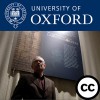User-produced Hebrew Prayer Books and Shared Iconography
Some Hebrew manuscripts were produced in Christian workshops, while others were made by Jewish artists themselves for their own use. An Ashkenazic siddur stands out as an example of a Jewish scribe-artist, influenced by the visual culture of his time, who drew on models, motifs and specialized techniques current in fifteenth-century Germany to illustrate his prayer book. Hebrew manuscripts shared iconography with other manuscripts from the same geo-cultural area. Italian Hebrew manuscripts thus recall the scenery of central Italy and depict the same plants and animals that appear in Latin manuscripts produced in local workshops, such as the famous atelier of Taddeo Crivelli in Ferrara. The mythological unicorn was a shared icon whose symbolic meaning depended on the genre or context. In Christian iconography the unicorn, resting with its feet in the lap of the Virgin, symbolises the incarnation of Christ; while in Jewish tradition it stands for the final redemption of Israel.




